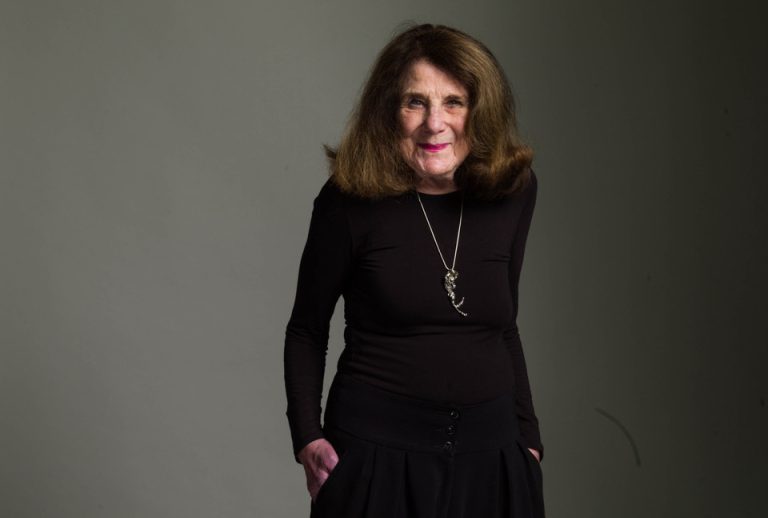Jacqueline de Jong, a Dutch painter who devoted 60 years to figurative painting even when it was not valued by the art world, died on Saturday in Amsterdam after a brief illness. She was 85.
“She was full of humor and keen insight throughout our time together,” her New York gallery, Ortuzar Projects, wrote in an announcement of her death. “Her spirit and influence will live on through her peers, friends, and family, and we are honored to be a part of that.”
De Jong has painted subjects ranging from French pulp fiction covers to billiards, from the Gulf War of the 1990s to Israel’s current war in Gaza. In her diverse body of work, she has challenged the fundamental principles of the medium, painting on unconventional materials and introducing “low” imagery into “high” art.
For many, her fame in art history has long been tied to her association with the Situationist movement, led by a group of left-wing artists and writers active in France in the 1960s. These artists sought to counter the proliferation of images in bourgeois mass media; de Jong’s work in The Situationist Movement was a movement that saw the rise of the Situationist movement in France in the 1960s. The Situationist Eraa short-lived publication she founded.
But later in her life, de Jong preferred to talk about the Situationist period rather than the later periods. Speaking of the turn to figuration at a time when abstraction was still prevalent, she told Art News Earlier this year, “People like images, people like making images. That means artists like making images. That means there’s a lack of representation.”
As a result, much of De Jong’s art focuses on figurative imagery, which she seems to take very seriously, even when the work itself is humorous. Sly feminist criticism runs through most of her paintings, and anti-war sentiment is more evident. But De Jong has never focused on a single style or subject, which in part stems from her omnivorous mindset.

Jacqueline de Jong, underground2021.
©Jacqueline de Jong/Courtesy of Ortuzar Projects, New York/Collection of Beth Rudin DeWoody
Jacqueline de Jong was born in the Dutch town of Enschede in 1939. Her parents collected works by Kurt Schwitters, Diego Rivera and others, which made de Jong develop a strong interest in art at an early age.
Because her parents were both Jewish, she had to lead a nomadic childhood, moving between the Netherlands and Switzerland during the period of the growing Nazi threat. After the war, in the 1950s, she studied drama at the Guildhall Drama School in London, planning to become an actress. “I definitely wanted to be on the stage,” she told Frieze 2017. “Fortunately, we can say that I failed.”
She moved back to Amsterdam and took a part-time job at the Stedelijk Museum, a museum known for its large collection of modern art. This set her on the path of becoming an artist and led her to meet Asger Jorn, co-founder of CoBrA, an avant-garde movement that advocated for childish, naive painting techniques to counter accepted artistic standards. The two began a decade-long relationship. De Jong was 19 at the time and Jorn was more than 20 years older than her.

Jacqueline de Jong, Donkeys in Lebanon1981.
©Jacqueline de Jong/Photo by Gert Jan van Rooij/Courtesy of Ortuzar Projects, New York and Pippy Houldsworth Gallery, London
Jorn’s extensive artistic network helped de Jong get in touch with Guy Debord, the founder of the Situationist International. de Jong told reporters: “I am interested in changing the world, very simply.” Frieze Her relationship with the Situationists.
The artist, who had settled in Paris at the time, parted ways with the Situationist movement when factions within the movement quarreled. The Situationist Era It was a response to being kicked out of the team. But the publication only lasted a few issues because De Jong could not afford to continue printing it.
De Jong’s painting style at the time resembled a cobra, with monstrous figures with bared teeth, crowding the space. But by the end of the 19th century, her figures became more defined, and she began referencing things she saw in mass media, from dinosaurs to astronauts. She rejected abstraction and would have aligned herself with the French movement Narrative Image, which emphasized allegory, but De Jong felt they didn’t accept her because she was a woman. Additionally, she was more interested in artists like Peter Saul, an American artist whose crude paintings were associated with the Pop movement.

In 2024, Jacqueline de Jong’s “Billiards” series was exhibited at Ortuzar Projects.
Photo: Dario Lasagni/Ortuzar Projects, New York
De Jong joined the left-wing movement during the May 1968 storm, before moving to Amsterdam in the 1970s. Although she had already experimented with multi-part painting by then, she continued to push the mode further, creating a series of works that could even be folded up and carried around like a suitcase. Later, she further tested the medium by painting on long canvases, suggesting that the traditional form of oil on canvas was effectively a thing of the past.

Jacqueline de Jong, Moriah (08.09.20) (Borderline)2021.
© Jacqueline de Jong/Ortuzar Projects, New York and Pippy Houldsworth Gallery, London/NSU Art Museum
While de Jong is highly regarded in the Netherlands, where some of her paintings are currently on display at the Rijksmuseum, she has only recently begun to gain renown abroad. In 2018, she was given a retrospective at Les Abattoirs in Toulouse, France; in 2020, another at the Stedelijk Museum, and in 2021, at the WIELS Center for Contemporary Art in Brussels. This year, an exhibition of her work will be presented at the NSU Museum of Art in Fort Lauderdale, Florida.
Yet even in her later years, de Jong seemed unperturbed by the reputation her art eventually garnered. As she put it Art News Earlier this year, “Painting is always out of fashion.”


